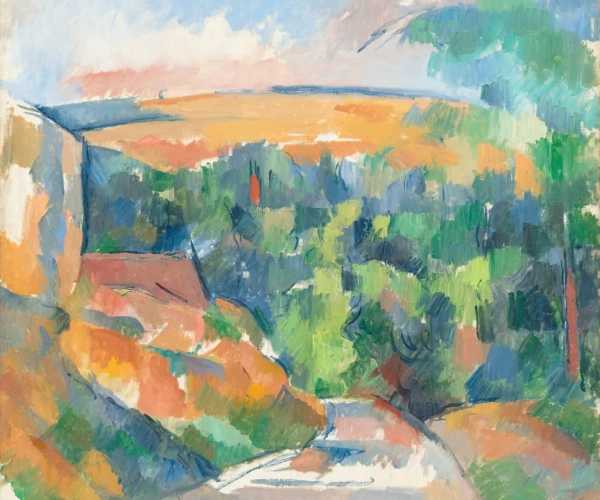A Bend In The Road
Paul Cezanne's "A Bend In The Road" is a stunning example of his revolutionary approach to composition and color. Painted in 1900-1906, it showcases Cezanne's mature style, combining elements of Impressionism and his own unique vision. The painting depicts a rural landscape with a winding road leading the viewer's eye into the distance. Cezanne's characteristic use of geometric forms and bold brushwork creates a dynamic sense of movement and depth within the scene.
What sets "A Bend In The Road" apart is Cezanne's innovative approach to capturing the essence of the natural world. He blends the visible and the abstract, emphasizing the structural elements of the landscape while also infusing it with a sense of emotional intensity. The juxtaposition of warm and cool tones further adds to the painting's complexity, drawing the viewer into a rich tapestry of color and light.
This work reflects Cezanne's lifelong exploration of perception and representation, as well as his fascination with the dynamics of space and form. By breaking down the scene into its underlying geometric components and experimenting with various viewpoints, Cezanne challenges traditional notions of pictorial space and invites the viewer to engage with the painting on a deeper, more contemplative level.
Overall, "A Bend In The Road" stands as a testament to Cezanne's enduring legacy as a pioneering figure in the development of modern art. His bold experimentation with form, color, and perspective continues to captivate audiences and inspire generations of artists, cementing his status as a visionary master of the visual arts.







No Comments Yet...